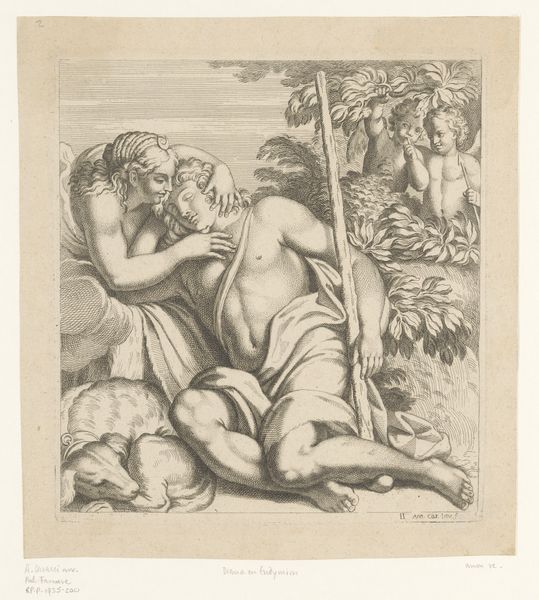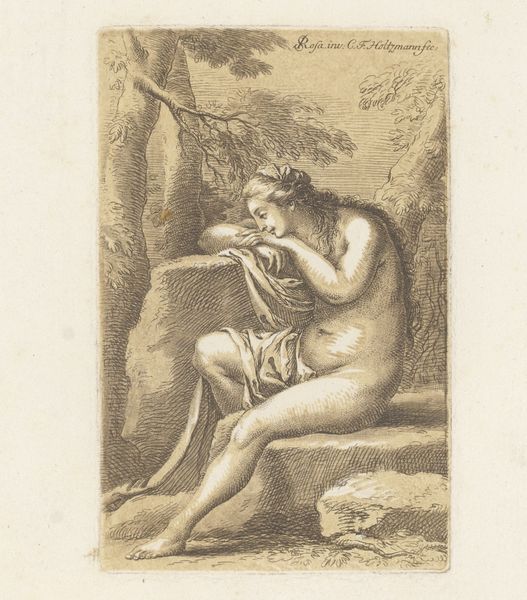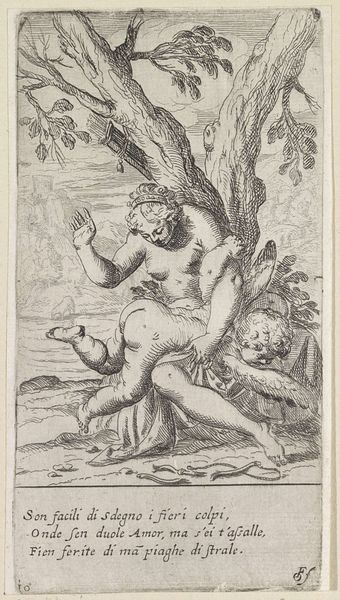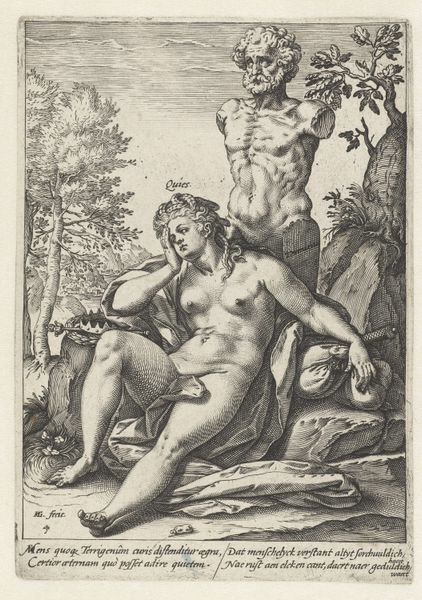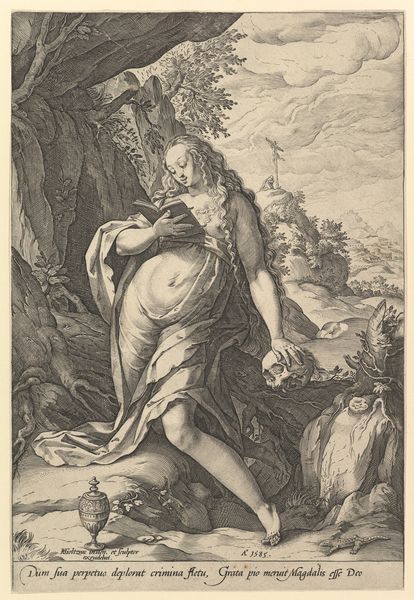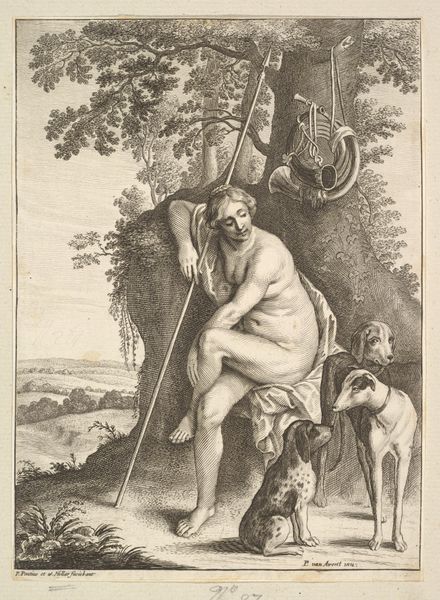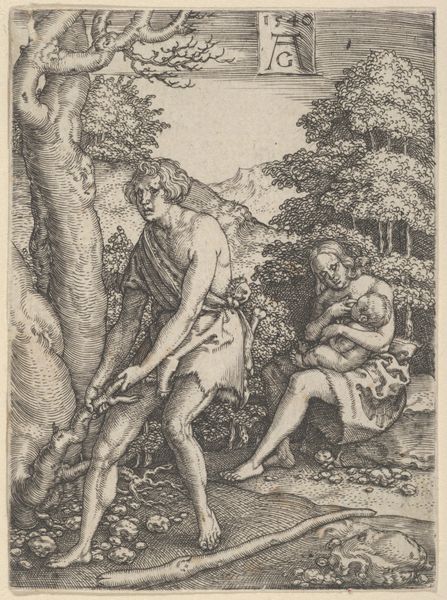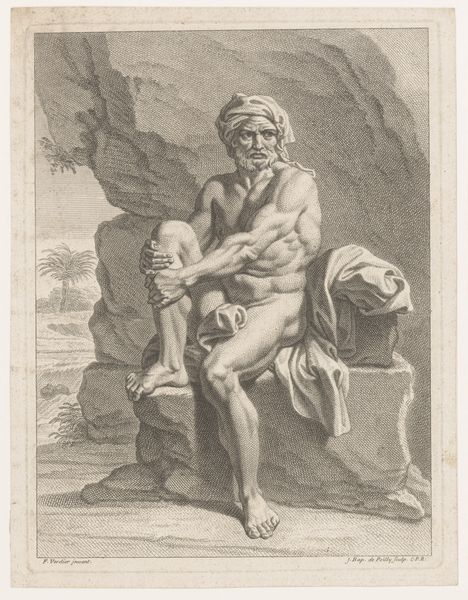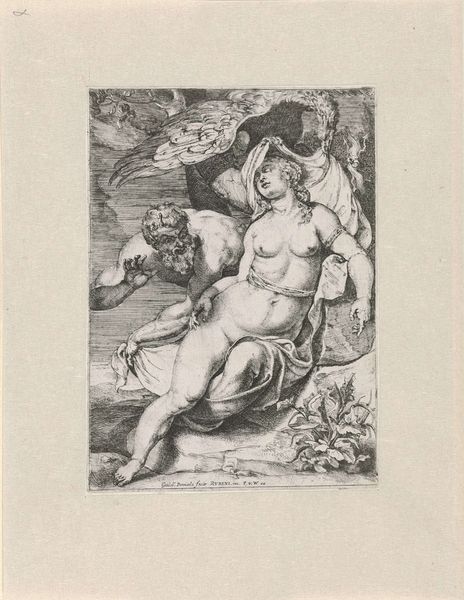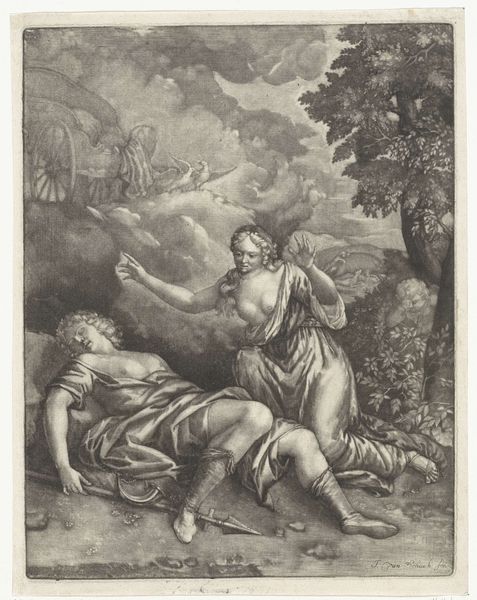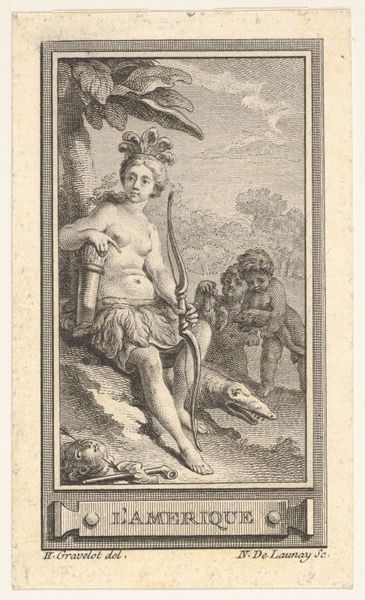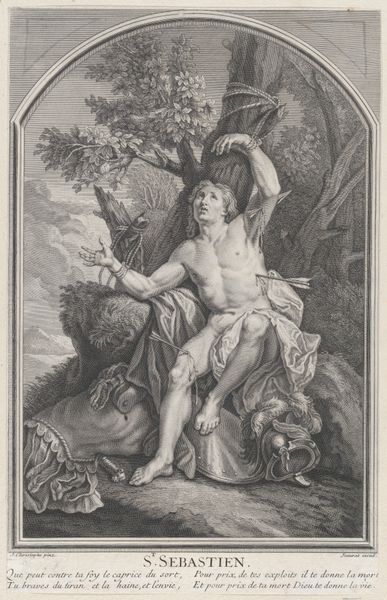
engraving
#
figuration
#
form
#
11_renaissance
#
line
#
history-painting
#
italian-renaissance
#
nude
#
engraving
Dimensions: height 198 mm, width 172 mm
Copyright: Rijks Museum: Open Domain
Curator: Here we have "Venus and the Rose," an engraving from 1532 by the artist known only as the Master of the Die. It's part of the Rijksmuseum's collection. Editor: It has this surprising sense of introspection, doesn’t it? Venus is captured not in triumph, but in quiet contemplation. There's a somber mood for a depiction of love. Curator: Indeed. The image subverts traditional expectations of Venus, the Roman goddess of love. The rose is not proudly displayed, but almost inspected. Considering roses often represent love's ephemeral nature, her thoughtfulness makes sense. Editor: And it's the gaze downwards, as if she sees something troubling reflected back at her. The line work is fascinating—so detailed and precise. It's an engraving, yes? A demanding process, so the artist's choice must be very intentional. Curator: Engravings allowed for the wide dissemination of imagery at the time, and prints like this circulated ideas about beauty, mythology, and even proper comportment to wider audiences than paintings could reach. The inclusion of her name connects this version back specifically to the mythology while grounding it within 16th-century beauty standards. Editor: But doesn’t the very act of taking something inherently sensual and making it so rigidly reproduced impact our perception? Almost like a visual code for acceptable desire at that moment in time. Curator: Certainly. The piece straddles a tension: an intimate, nude subject mediated through controlled, public dissemination. Venus was used to represent ideal form. Seeing it printed as a reversed image underscores this remove. Editor: Looking at the landscape, a slightly idealized but believable scene, it’s striking how she occupies both the real and mythological spaces. That tension elevates the symbolic potential. It brings forward these powerful cultural questions through its central figure. Curator: It certainly makes one ponder Venus' cultural weight, a representation and commentary of love as well as a historical ideal to emulate. Editor: It does. Thank you, this has me reflecting quite differently now about similar art practices.
Comments
No comments
Be the first to comment and join the conversation on the ultimate creative platform.
